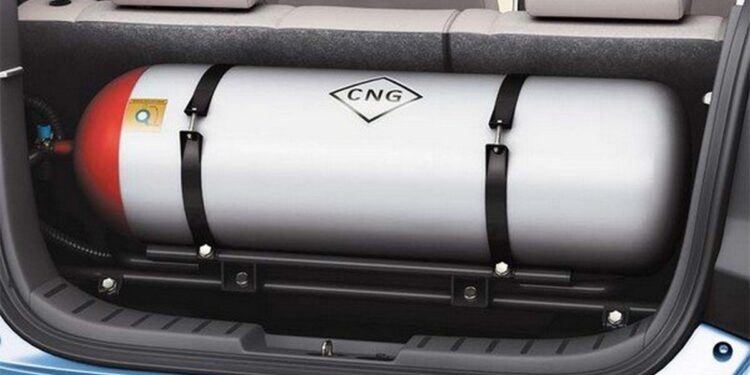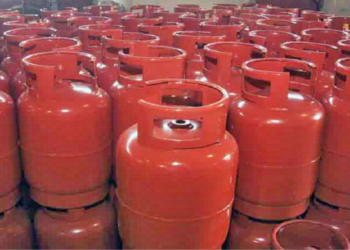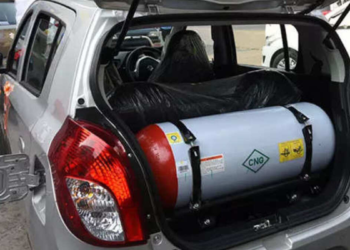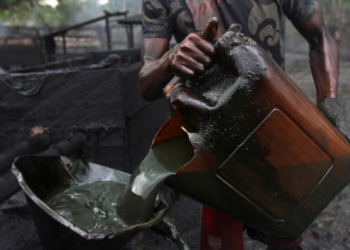In about 3 months, Nigerians will be expecting the delivery of compressed natural gas (CNG) infrastructure, as promised through the agreement between the Nigerian National Petroleum Company Limited (NNPCL) and Nipco Gas Limited.
Under the agreement between both entities, Nigeria’s plan for CNG rollout, coordinated by NNPCL and Nipco Gas Limited, is unfolding in two key phases. In the initial stage, 21 CNG stations are being established to cater to transportation needs within cities.
These stations are projected to be operational by the first quarter of 2024.
The subsequent phase entails the development of 35 CNG stations intended to facilitate transportation between cities. This second phase is also slated for completion by the year 2024.
To further bolster this initiative, an additional 56 stations are set to be deployed across the country under the auspices of NNPC Retail stations.
This multi-phase plan aims to enhance access to CNG across various transit routes, ensuring that both intra-city and intercity transportation needs are met, thereby promoting the adoption of CNG as a viable and more environmentally friendly fuel option.
In a discussion with Nairametrics back in August 2023, Kelvin Emmanuel, who serves as the Chief Executive Officer of Dairy Hills and is also an Energy Markets Analyst, offered insights into the financial aspects of establishing a CNG mother station.
According to Emmanuel, the average cost to construct a single CNG mother station amounts to approximately $1.2 million. However, this estimation accounts for various influencing factors inherent in the setup and construction process.
Considering the NNPCL-Nipco collaboration’s intentions to initiate the development of three distinct mother stations, Emmanuel’s analysis indicates that this endeavour could potentially necessitate an overall expenditure of around $3.6 million.
Nigeria’s Electricity Status Quo
Currently, Nigeria’s electricity production stands at 4,000 megawatts (MW), as data from the Nigerian Electricity Regulatory Commission (NERC) shows that electricity capacity in the country grew only by 7.95% between 2015 and 2022.
The Minister for Power, Adebayo Adelabu, has shed light on the country’s electricity struggles, emphasizing that the primary issues revolve around transmission and distribution.
He pointed out various contributing factors, including aging infrastructure, a lack of consistent maintenance practices, and financial constraints experienced across the energy value chain.
Adelabu highlighted the complexity of resolving Nigeria’s electricity challenges, noting that a comprehensive approach is necessary. However, he acknowledged the present limitations, stating that due to escalating inflation rates and the current economic slowdown in the country, the federal government is unable to implement cost-reflective tariffs immediately.
Recognizing the multifaceted nature of the issues, the Minister emphasized the need for a broader strategy to address these challenges effectively, underscoring that resolving Nigeria’s electricity concerns requires a concerted effort and a more comprehensive solution than merely adjusting tariffs.
Setting up a CNG value chain
In the process of establishing a Compressed Natural Gas (CNG) infrastructure, there are several key components involved in the value chain.
This chain typically includes the primary or ‘mother’ station, responsible for supplying gas to both mobile and stationery ‘daughter’ stations.
To ensure the smooth operation of these stations, a consistent electricity supply is crucial. However, what’s particularly important is that utilizing off-grid electricity stands out as the optimal choice for powering CNG stations.
Kayode Oluwadare, a natural gas analyst, emphasizes certain critical considerations when setting up a compressed natural gas (CNG) station.
He highlights the necessity of understanding the nature of the available gas supply in the pipeline location where the mother station will be established.
This understanding helps operators comprehend the logistics and economics related to gas delivery, supply, and compression requirements.
Oluwadare further clarifies that while establishing a CNG station requires electricity, it doesn’t necessarily rely on grid electricity. Instead, operators often resort to improvised or off-grid electricity sources to power these stations efficiently.
He said:
- “There are gas vessels that carry liquefied petroleum gas (LPG) or liquefied natural gas (LNG) and they need fuel for transit, so they make use of the LPG or LNG to power their mobility.
- “In the same way, we can use CNG to power mother-daughter stations, this will depend on the capacity in use. The compressor consumes the most electricity in a CNG station, the consumption will depend on the compressor.
- “The dispenser also consumes power, as well as air conditioners, and other equipment, but they consume less than the compressor.”
Insights on mother-daughter stations
Speaking further on CNG infrastructure, Kayode Oluwadare, shed light on the critical connections required by CNG mother stations to function optimally. These stations are reliant on being linked to existing gas pipeline infrastructures as their primary source of feed gas.
What makes these gases distinct is their composition some are meticulously processed and pre-treated, while others remain untreated, necessitating compression upon reaching the CNG mother station.
The CNG mother station serves as a pivotal hub in this chain, facilitating the distribution of gas to subsequent ‘daughter’ stations. These stations, categorized into mobile and booster daughter stations, perform essential functions integral to the CNG supply chain.
The primary tasks of the mother station encompass selling gas directly to vehicles for transportation purposes and dispensing gas into trucks, catering to both fuel needs and delivery to industrial clusters.
The mother station equips mobile daughter stations with the necessary tools for gas distribution, enabling them to transport gas to buyers for power generation purposes.
However, in certain regions, especially in the Northern part of Nigeria where gas pipelines are not available, stationary booster daughter stations come into play.
These stations, situated strategically in areas with pipeline limitations, serve as essential points for gas storage and distribution.
Oluwadare further emphasized the technicalities involved in gas compression within the CNG stations. The working pressure required for dispensing gas into storage units at these stations ranges from 200 to 250 bar.
To contextualize, this pressure range is significantly higher than the pressure of a typical bullet, which stands at 20 bar.
As the gas progresses to booster daughter stations, the pressure drops to approximately 100 to 150 bar.
To re-attain the necessary pressure levels for vehicles and industrial use, these booster stations are equipped with mini compressors designed to augment the compression capacity, thereby elevating the CNG pressure for distribution.























